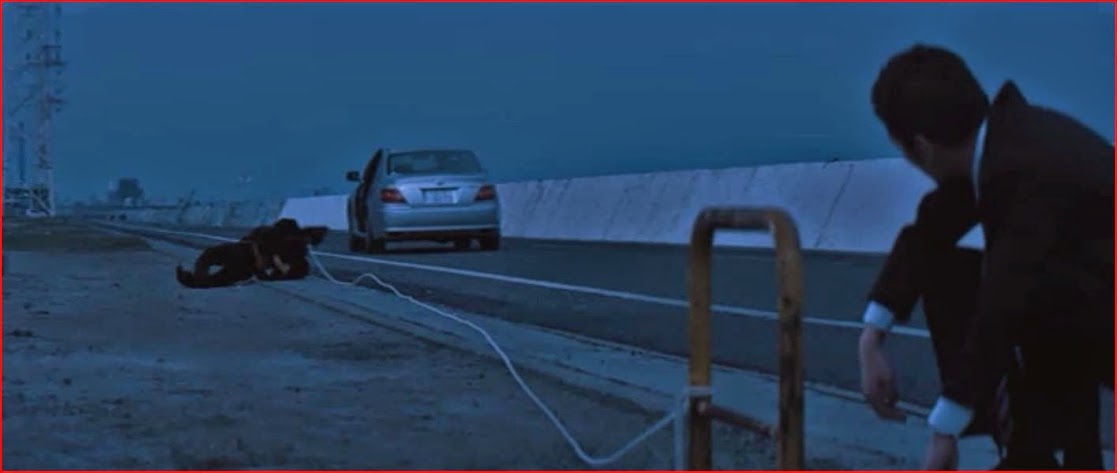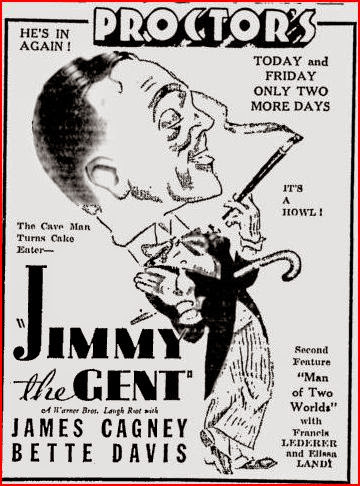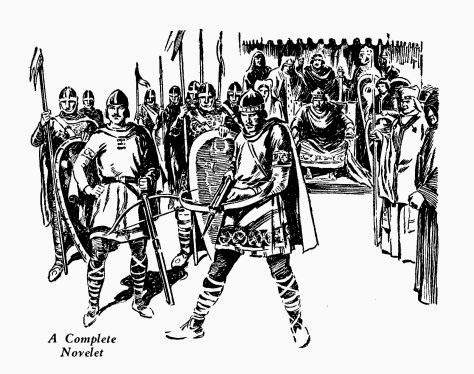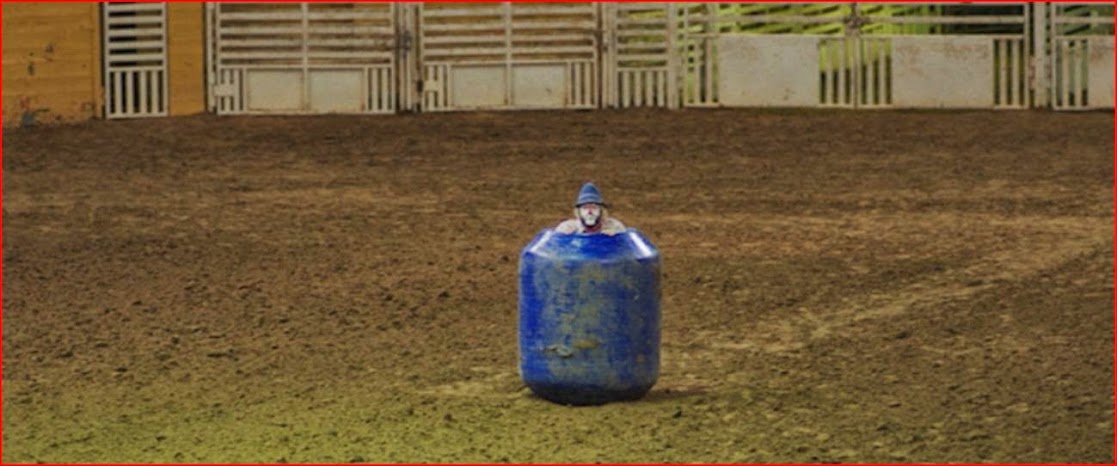As far as we know we haven't consciously avoided looking at the world of today, but we also haven't made any particular point of dwelling on the sickening tragedies that are piling up around that poor bewildered animal, mankind. We thought we might give you a place where you could get away from all that for a little time each week. But the reader ... seems to think otherwise. We are cowards, purveyors of rose-colored glasses -- a kind of cross between pink lemonade and a marijuana cigarette. Comes the revolution, and we will be, it appears, the first to go.
The editor goes on to cite the serial "Wild River," which continues this week, as proof that "we'd found the happy medium between entertainment and the realistic view." He also cites this week's cover story.
We're little more than three months away from Germany's invasion of Poland, and seven months removed from the infamous "War of the Worlds" radio broadcast. People are so scared that they can choose their poison. There's Nazi Germany, of course, which most recently had taken over what had remained of Czechoslovakia after last year's Munich settlement. There's the Soviet Union under Stalin and the enduring threat of world revolution through Bolshevik terror. And for pulp readers, there is always the yellow peril.

In 1939 the peril was arguably more real than it had ever been since the days of Genghis Khan. While Japan so far was more of a menace to its fellow "yellow" people in China than to the western world, the island empire's rise in less than a century from isolated backwater to modern superpower seemed to fulfill many racist prophecies of a great threat from the east. Arthur Leo Zagat, last seen wrapping up the "fantastic" serial "Seven Out of Time," doesn't identify the invaders in "Tomorrow" as the Japanese. He doesn't need to go into that much detail, probably because he knows he's just starting a series of stories for which there'll be a voracious market. Likewise, he doesn't give us a specific date for this initial story. All we know is that it's little more than a decade since the successful invasion of the United States by an overwhelming force that is not white. "Some of them were black-faced, and some yellow-faced," Zagat writes, but the yellows seem to be in charge. Cities have been leveled by bombs, able-bodied people enslaved in work camps. There are hints of mass rape: "Did you hear how they wen through all the houses that was left and dragged out--?" someone says in one of the story's flashbacks.

These are the all-too-literal dreams of Dikar, born Dick Carr, one of a small group of children smuggled out of a falling city and raised in isolation on a mountain the invaders haven't yet explored. These now-grown kids have forgotten more of their culture than seems plausible in approximately a decade, and now live according to a code of "Do-Nots" laid down by the last of the "Old Ones." The "Bunch," as they call themselves, still live in separate quarters for boys and girls, each of whom have their own Boss. Dikar had been Boss of the boys, but is exiled after getting caught cheating -- inadvertently: a friend had put a rock in his fist somehow without his knowing -- during a formal fight for dominance. He explores the wilderness and has his first encounter with the invaders after discovering the slave camp. Having developed into a strong man in his healthy environment -- getting food apparently was no challenge for the Bunch -- Dikar beats a black soldier to death and finds he has no choice but to return to the Bunch's territory, where he redeems himself by defeating his old enemy fairly and begins to plan an insurgency.
'Some day, Marilee,' Dikar ended, 'I shall lead the Bunch down there. I have to, because down there is the America of which the man spoke, an this is the Tomorrow he talked about, an we are the children of yesterday who will reconquer those green and pleasant fields for democracy, and liberty, and freedom.'
And all at once there was a light shining on the land down there, a great and golden light that cast no shadow.
That's a sample of Zagat's imagination of a language for people whose education was stunted in mid-childhood. As you can see, he evokes little in the way of juvenile slanginess beyond the "an" in place of "and," while the Bunch's rhetoric gets downright purple at times. Today's readers might expect something sounding more like the kids in Mad Max: Beyond Thunderdome but Zagat can't really push beyond his usual style. Anyway, the main attraction is not how funny they talk but the post-apocalyptic circumstance they find themselves in, and the flattering promise that guerrilla warfare waged by untested (if brawny) youth will accomplish something. Argosy already intends to fulfill that promise, announcing that the first sequel, "Children of Tomorrow," -- not "Children of Yesterday" despite Dikar's opinion -- will appear very soon.

The actual Japanese figure prominently in Alfred Batson's "Glory Hill." In this short story a group of British "old China hands" in a hilltop hotel hold off a Nipponese army until they can negotiate an honorable withdrawal. I suppose its a hymn to racial fighting prowess, but the moral seems relevant beyond Asia: "If we had surrendered to them at the outset they'd surely have been rough with us. But when we stood up against them they respected us. I guess life is like that."
John Stromberg's "Wild River" is nothing if not relevant, even if it's set several years in the past, when the Boulder Dam was still called Hoover Dam and FDR had not yet become President. Ludicrous as Argosy's billing of it as "The Great American Novel of 1939" may look, this is an ambitious story with some mature ambivalence amid the action scenes. In the second installment our hero Speed Foley barely survives a tunneling accident in which his mentor is killed. They were working along the Arizona-Nevada border, and the contractor wants Speed to testify that the accident happened on the Nevada in order to avoid a lawsuit from the deceased's Arizona relations. Speed knows (or believes) that it all happened in Arizona. He feels pressured to testify a certain way to keep his job, and for that he's accused of being a sell-out by his sort-of friend Joe Mendel, a Ph.D. forced by circumstances to take a small-time job in the timekeeper's office. If the lawsuit angle hints at corporate deviousness, Stromberg is also skeptical toward Mendel's obsessive class-consciousness. If any character in the story is idealized its Danny Henderson, the old-timer killed in the accident. "Joe liked to argue about Workers, and old Danny had only worked," Speed muses. Stromberg seems to favor a sort of rugged individualism that can't really take sides between Capital and Labor, or between private and public sectors. "I couldn't see that it made any difference," Speed says, "The System or the Government -- there still would be a lot of men at the bottom whose importance was their numbers, and the river and the rock would kill them just the same." For all that, "Wild River" isn't exactly a novel of ideas, though it may be just that by Argosy's standards. For those less captivated by politics, there are vivid descriptions, most likely based on experience, of the dangerous work on the dam project, and the occasional fight. Its virtues make the fate of author John Stromberg, a pulp mystery man, a more intriguing mystery as we go along.
You probably don't get less relevant than the final installment of Fred MacIsaac's "The Golden Woman." This three-parter closes in action-packed fashion as the title character, her admirers in the Company of Jason, and their former captor make their escape from angry Araucanian Indians. It's corny action, though, punctuated by hokum, as when the golden woman eases tensions between different factions in the escape party by reciting the Lord's Prayer and singing "Adeste Fidelis." There's a terribly old-fashioned sensibility here that MacIsaac tries to pass off as the attitude of the ficitonal 19th century narrator, but is more likely his own melodramatic manner.
The whole company kneeled. Laura de Lorme, more beautiful than any woman I had ever beheld, seeming almost exalted in that moment, stepped forward. Her head was raised, and the golden pennant of her hair billowed about her shoulders. Her breast rose and fell with the gentle stir of her breathing....She sang in Latin; presently one or two of the men began in halting tones to follow her, using the English words. Others joined in. Slowly the sound grew firmer, deeper, and swelled to a mighty chorus; the mighty crags of the Andes caught it and filled it with what seemed divine echoes until the sound was of a mighty angel chorus singing in unison with our lady. The moon bathed the scene in pure silver....
This sort of thing may have been what J. H. Calderman, however unfairly, had in mind when he wrote to Argonotes. Calderman would have been right, in the most unfortunate way, if he felt that MacIsaac was an obsolete writer. MacIsaac may have felt that way himself when he committed suicide the following year.
Elsewhere this week, Hugh Pentecost's "Cancelled in Red" continues to complicate itself nicely in its penultimate installment, while Richard Sale reappears with "Fish Aint Got No Brains," the story of a heroic dolphin that must have gone over well, since Sale would write a sequel in 1940. Dale Clark contributes the latest adventure of the chiseling talent agent J. Edwin Bell, "The Spitting Image," in which the notorious flesh peddler rips off a ragged bootblack before realizing he'd be ideal for the part of the star's child in a forthcoming production. After a rare week without a western story, Howard R. Marsh resumes a series about desert hotel proprietor Itching Foot Davis and his Chinese sidekick Wong Tong, who this time help a poor rancher and a poor but pretty young woman get hitched with the reward for recovering stolen money. What entertainment value there is is in the colorful dialogue and the tease of disastrous consequences of Itching Foot's intervention before the inevitable happy ending. Whether that counts as pink lemonade or marijuana is a matter of taste.
Next week, Hugh Pentecost does double duty, resuming his true identity as Judson Phillips for a timely baseball story while wrapping up his mystery serial. I rather dread reading sports stories, but the phenomenon itself will be something new to write about, so stay tuned....
TO BE CONTINUED!
 H
H
 M
M







 T
T










 H
H 2013
2013




 R
R